The U.S. military’s USX-1 Defiant medium-sized drone ship with a battleship-like hull profile is currently undergoing dockside trials ahead of a planned months-long open-water cruise to demonstrate its core capabilities. Designed from the keel up to sail without any humans ever onboard and for efficient mass production, Defiant is eventually expected to be handed over to the U.S. Navy for additional testing with more of an eye toward potential real-world missions that could help with the service’s push to add more capable USVs to its fleets. TWZ was first to confirm the uncrewed vessel had been launched after it was spotted in the Puget Sound in Washington state earlier this year.
Ryan Maatta, marine engineering manager at Serco, gave TWZ‘s Howard Altman an update on Defiant from the floor of the Navy League’s Sea Air Space 2025 exhibition earlier this week. The USX-1 was developed for the U.S. Defense Advanced Research Projects Agency’s (DARPA) No Manning Required Ship (NOMARS) program, for which Maatta is also the deputy program manager.

“We’re in dock trials pre-delivery of the vessel right now. And then we’ll be heading off to the typical DARPA demonstration to prove that we did what they set out to do with the technology,” Maatta said. “We expect to be on the water this summer like we had planned to be. If everything goes well, we’re going to go on that long endurance trial we previously mentioned.”
Defiant is currently docked at Naval Station Everett, a Navy installation on the Puget Sound in the city of Everett, north of Seattle. The uncrewed surface vessel (USV) was launched from Nichols Brothers Boat Builders on Whidbey Island just across the sound.
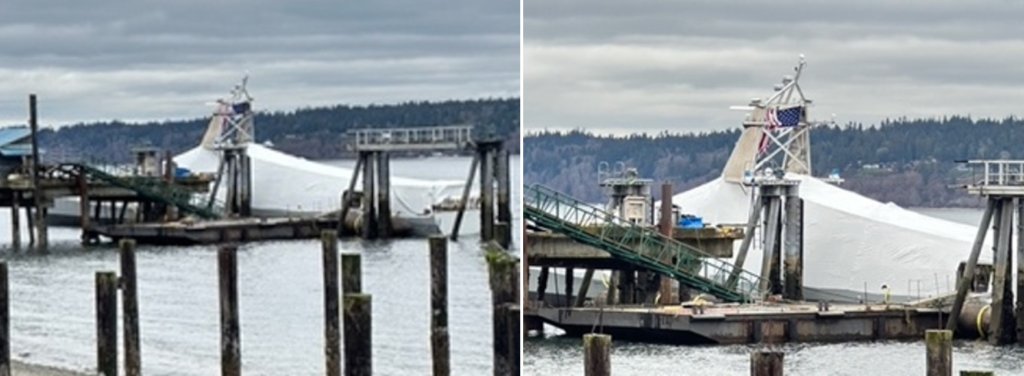
DARPA has said that it expects Defiant’s at-sea demonstration to last multiple months. To support that planned long-endurance cruise, DARPA, in cooperation with the Navy, has also been developing a new at-sea refueling system for USX-1 that does not require personnel on the receiving side.
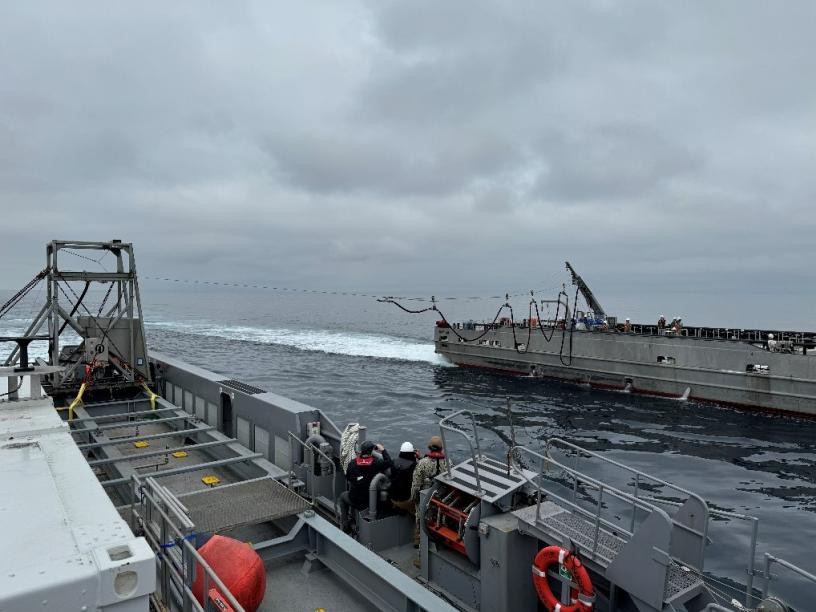
“Post-DARPA demonstration, it will be delivered to SURFDEVRON at Naval Base Ventura County, and PMS 406 will be the program office that sponsors it,” Maatta continued.
SURFDEVRON refers to the Navy’s Surface Development Squadron One, created in 2019, ostensibly as a test unit. Last year, SURFDEVRON formally evolved into the larger Surface Development Group One (SURFDEVGRU), which now has two unmanned surface vessel squadrons, or USVRONs, assigned to it. The group also oversees the two Zumwalt class stealth destroyers in Navy service now and will eventually receive the third of those ships, the future USS Lyndon B. Johnson.
PMS 406 is the Unmanned Maritime Systems office under Naval Sea Systems Command (NAVSEA).
“When we deliver to SURFDEVRON, what we’re really hoping to do is a bunch of exercises with mission systems, because the DARPA demonstration doesn’t include mission systems,” Serco’s Maatta added. “So we’d like to prove out the big ‘R’ requirement utility of something like this. So what can it effect? What could it carry? And that integration of mission system and platform is what we’re hoping for.”
As already noted, Defiant was designed from the outset to be operated without any humans being on board, even just to provide an extra margin of safety. The larger USVs the Navy has been experimenting with to date are either converted from crewed ships or are otherwise designed to be optionally crewed. The U.S. military has historically categorized medium USVs like the USX-1 as having lengths under 200 feet and displacements under 500 tons, but also being larger than speedboat and jet ski-based designs. Large USVs (LUSV) have lengths up to 300 feet and displace up to 2,000 tons.
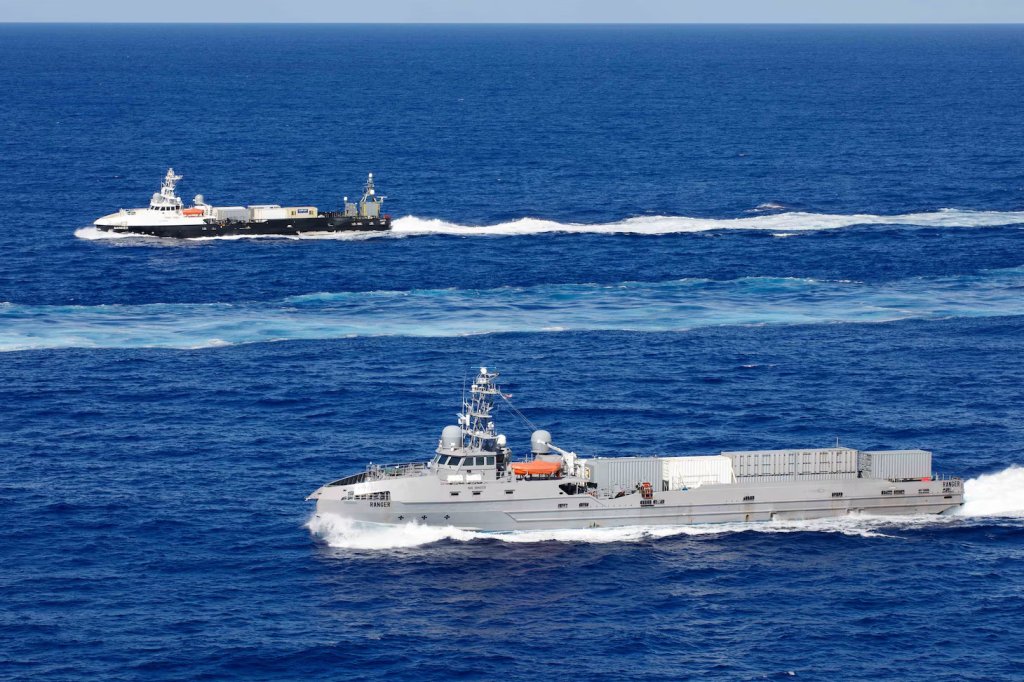
With NOMARS, DARPA’s core proposition “was that you could go to sea for a year completely unmanned, with a 90% availability, that they [the USVs] would be fast turnaround, cheaper to operate,” and able to sail at up to “20 knots at Sea State 3″ while carrying useful payloads, according to Serco’s Maatta. ” So we’ve met those” requirements.
Under the Beaufort Scale, Sea State 3 includes winds up to 10 knots and average wave heights of around two feet, sometimes rising to a maximum of three feet.
Maatta said he could not provide additional details about Defiant‘s specifications and current capabilities, and directed us to reach out to DARPA for more information. He did describe it as having a high degree of both “system and navigation autonomy.”
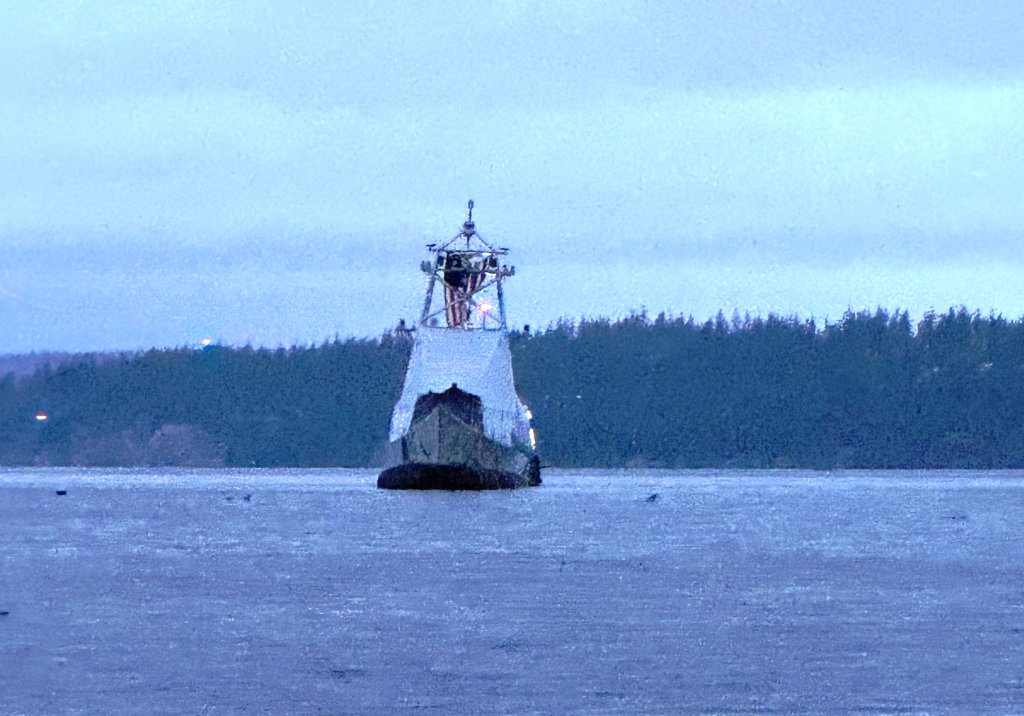
Though exploring how Defiant might be operationalized is not part of DARPA’s immediate plans, the USV was designed very much with the potential integration of mission payloads in mind.
“We’re built around a number of indicative mission systems,” Maatta explained. “So podded or containerized systems. There’s quite a few already in [Navy] inventory.”
Maatta specifically highlighted a test-firing of a multi-purpose Standard Missile-6 (SM-6) from a containerized launcher based on the Mk 41 Vertical Launch Sysem loaded on the Navy’s Ranger USV back in 2021, as one example payload. Serco has also presented BAE Systems’ Adaptable Deck Launching System (ADL), which can fire missiles from the same canisters used with the Mk 41, as another potential option.
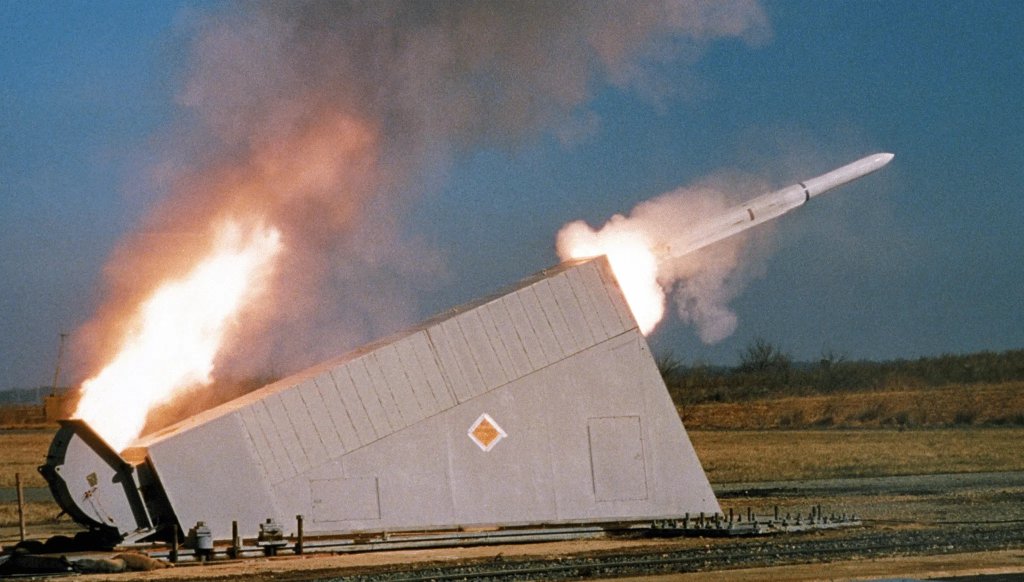
Armed with missiles, Defiant could be used “as an exterior magazine for destroyers,” Maatta highlighted. “We’re decommissioning all the CG-47s [Ticonderoga class cruisers] right now. They’re 128 [VLS] cell vessels. We have to make up for that missile gap in some way.”
The Navy is getting ever closer to retiring the last of the Ticonderogas, but did announce plans to extend the service life of three of them last year.
“There’s many others [payload options], as you can possibly imagine. C2ISR [command and control, intelligence, surveillance, and reconnaissance], those kind of payloads,” Maatta noted. “The thing about Defiant, and MUSVs, in general, is that they’re large enough to carry tactically useful payloads, and [do so at] tactically useful distances and [in] open water.”
Serco has also suggested in the past that logistics could be another mission set for Defiant.
“You always need to be man-in-loop for shoot[ing munitions], but maybe some of the equipment or kinetics could be offloaded to an [uncrewed] platform. It makes a lot of sense from a distributed logistics or distributed lethality standpoint, because it’s a small, inexpensive platform that can get up and away or over the horizon,” Maatta added. “And I think once people start war gaming with the platforms, they’re going to find a lot of value and use for something [with] this size, endurance, range.”
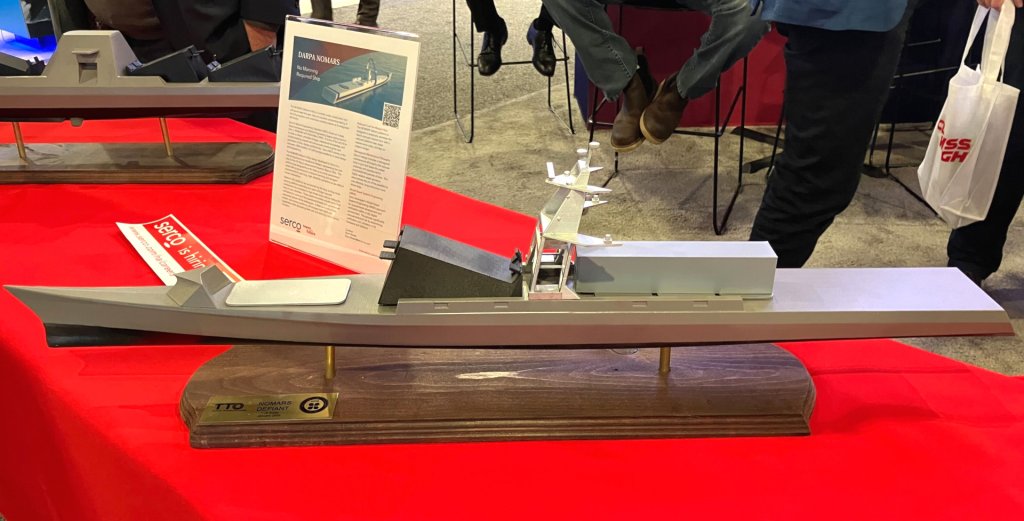
Talk about modular payload, including containerized missile launchers, as well as the broader operational relevance that MUSVs offer, especially compared to smaller designs, is well in line with the direction the Navy says it is heading in with its USV plans. In January, the service announced it was refocusing its efforts on acquiring smaller, simpler, and more interchangeable drone ship designs rather than distinct MUSV and LUSV fleets.
The Navy has also been struggling in recent years with serious delays and cost growth across a number of traditional crewed warship and submarine programs. This, in turn, could put new emphasis on USVs as lower-cost and more readily producible options to help bolster its fleets, especially amid preparations for a potential high-end fight in the Pacific against China. Serco has consistently touted how Defiant was designed as offering particular advantages in this regard.
“We have delivered a vessel in a reasonable time frame, at a reasonable cost, which is somewhat rare in today’s industry. We did that by being the designer and the prime [contractor] of the vessel, and procuring almost all the material from the industrial base, and integrating it ourselves,” according to Maatta. “Rather than it being a shipyard-led prime, it was the government and their system integrator working together to procure all the materials and to pivot when things got tough and get the ship delivered, which is more how we used to do ships in the [19]80s than how we do ships nowadays.”
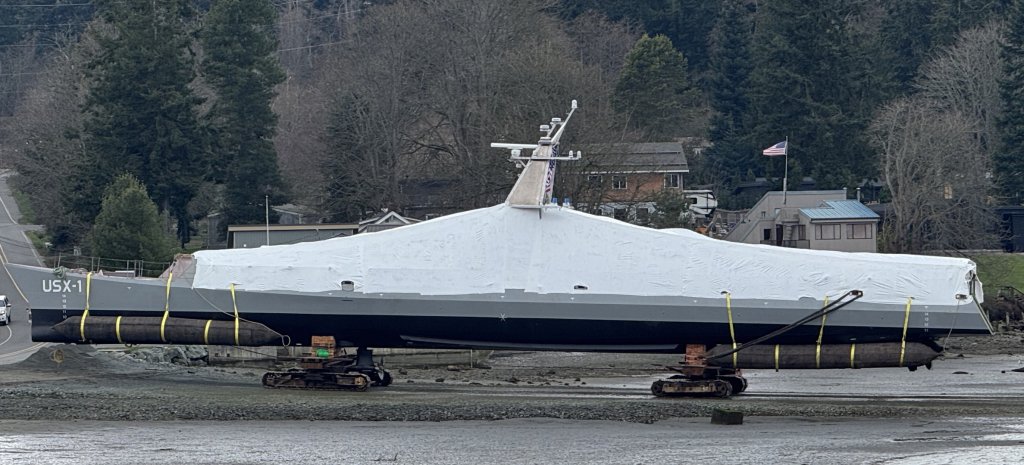
“I say 14 months with 14 men welded our hull together. The hull is allowed to be very simplistic thanks to the fact that there’s no personnel on board. So there’s no heads [toilets], there’s no galleys, there’s no passageways, there’s very few penetrations through the bulkheads. So it’s very modular in its construction, and it allows for a very quick by-hand construction,” he continued. “So tier three shipyards [that could produce Defiant], there’s more than 35 tier three shipyards in the United States. The size engine we’re using are produced by the tens of thousands across three manufacturers.”
Serco has also already been exploring the possibility of larger USVs based on the Defiant design for years now. This includes one called the Dauntless that could be armed with up to four ADLs or other containerized missile launchers, among other payloads.

It remains to be seen how Defiant, or other variants or derivatives of the design, might ultimately enter operational service with the Navy or any other armed forces. In the meantime, Serco and DARPA are pushing ahead toward a real-world demonstration of the drone ship’s core ability to operate with a high degree of autonomy on the open sea for weeks, if not months, at a time.
Howard Altman contributed to this story.
Contact the author: joe@twz.com
